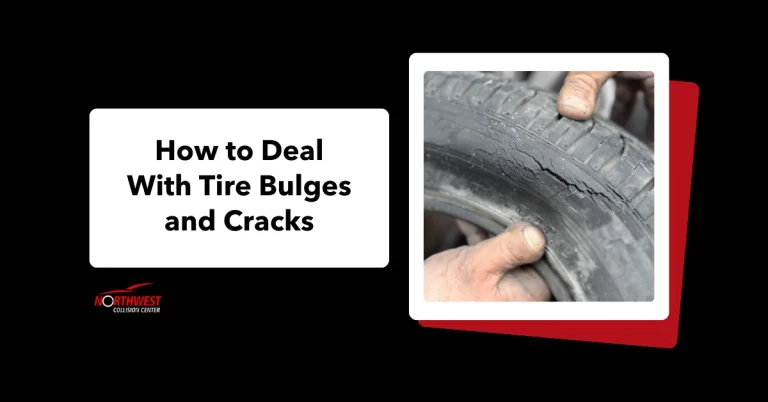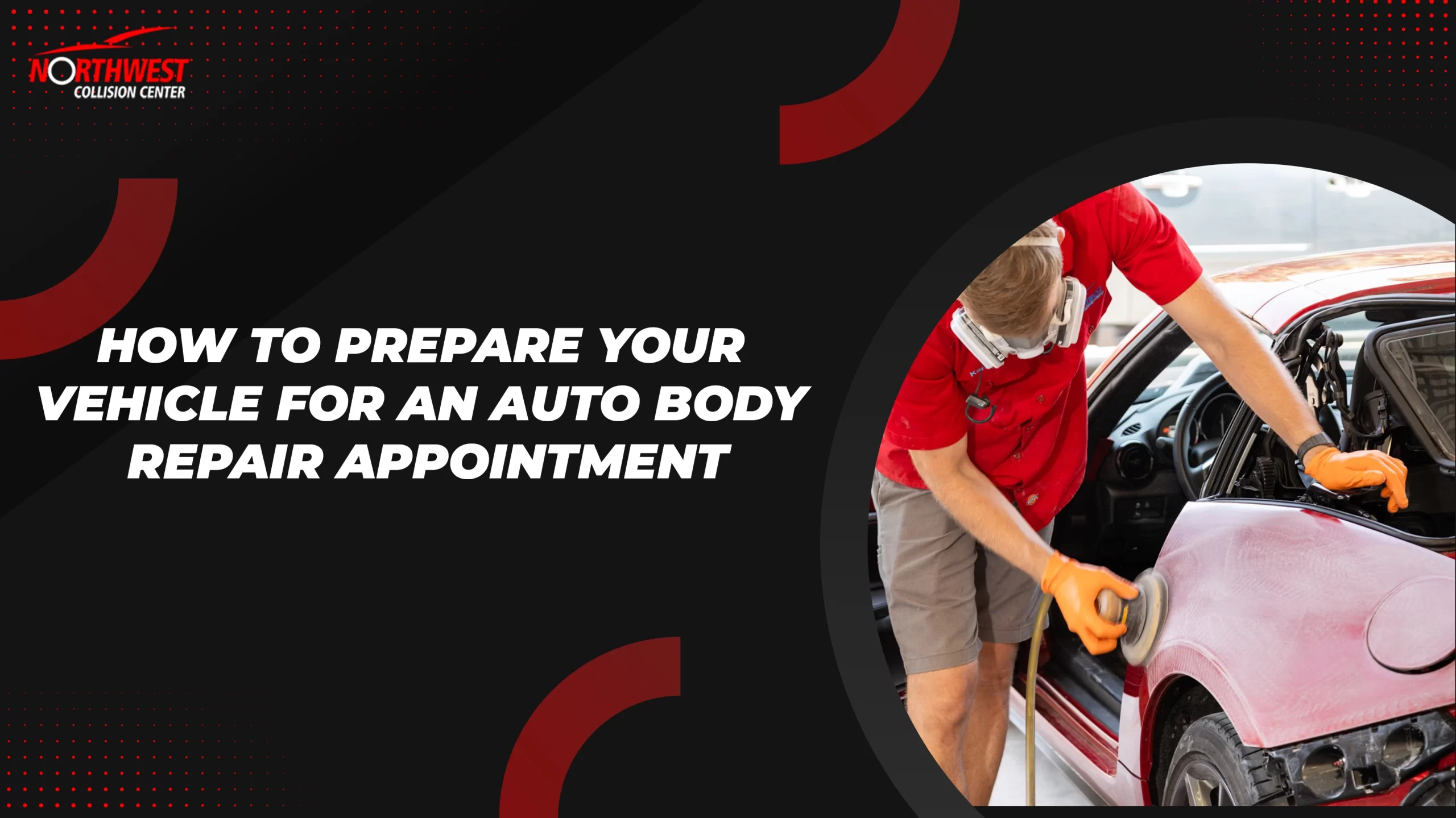To deal with tire bulges and cracks, start by identifying warning signs like visible deformities or irregular wear. Understand that bulges often indicate internal damage from impact or over-inflation, while cracks can stem from UV exposure or improper pressure. Never drive on damaged tires, as they pose significant blowout risks. Seek a professional inspection for accurate assessment and potential replacement, as self-repair is usually ineffective for severe damage. Finally, maintain regular tire checks, ensuring proper inflation and alignment to prevent future issues. There’s more to explore for effective tire management strategies that can keep you safe on the road.

Key Takeaways
- Inspect tires regularly for visible bulges and cracks to catch issues early and prevent blowouts.
- Consult a professional for accurate diagnosis and to discuss potential repair or replacement options.
- Avoid driving on damaged tires, as they compromise safety and increase the risk of accidents.
- Maintain proper tire pressure and check monthly to reduce wear and prevent bulging.
- Implement a regular tire rotation and alignment schedule to promote even tread wear and extend tire life.
Identify the Warning Signs Early
Identifying warning signs early can save you time and money when it comes to tire maintenance. You should regularly inspect your tires for issues such as tire cracks or bulges. A tire that has a bulge indicates a possible internal failure, often due to over-inflation or impact damage. If you notice any irregularities in the shape of your tire, it’s essential to address them immediately. Bulges can compromise structural integrity, leading to blowouts while driving.
Additionally, keep an eye out for tire cracks, which may develop due to environmental factors like UV exposure or improper tire pressure. These cracks can grow over time, affecting the tire’s performance and safety. When you spot any of these signs, don’t hesitate to consult a professional technician for an accurate diagnosis.
Understanding what causes bulges in tires can help you prevent future problems. Factors like carrying excessive loads, poor alignment, and hitting potholes can all lead to tire damage. Regular maintenance, including proper inflation and rotation, can mitigate these risks and extend the life of your tires. Staying proactive guarantees a safer driving experience and saves you from costly repairs down the line.
Understand the Causes of Tire Bulges and Cracks
Tire bulges and cracks often stem from a variety of underlying issues that can compromise your vehicle’s safety and performance. Understanding these causes is essential in preventing further damage.
A tire bulge typically arises due to:
- Impact Damage: Hitting a pothole or curb can break the internal structure of the tire, leading to a bulge. Rocks and other hard and sharp objects are also a concern on the road!
- Under-inflation: Keeping your tires at lower than recommended pressure puts excessive stress on the sidewalls, causing deformities.
- Manufacturing Defects: Sometimes, poor construction quality can result in weak points, leading to bulging.
As for cracks, they usually occur due to:
- Aging: Over time, rubber compounds deteriorate, making your tires susceptible to cracks.
- Environmental Factors: Exposure to UV rays, extreme temperatures, and ozone can accelerate wear and tear.
- Improper Maintenance: Neglecting regular tire rotations and alignments can cause uneven wear, contributing to cracks.
You are now aware of the causes of tire bulges and cracks. Regular checks and upkeep will enable you to identify these problems early on, ensuring a safe driving experience.
Avoid Driving on Damaged Tires
Driving on damaged tires poses considerable risks that can jeopardize your safety and that of others on the road. If you notice tire bulging at the bottom or cracks on the sidewall of your tire, it’s essential to take immediate action. These defects compromise the tire’s structural integrity, increasing the likelihood of blowouts and loss of vehicle control.
While you may wonder, “can a tire bulge be fixed,” the reality is that bulging often indicates internal damage, making repair unlikely and unsafe. Cracks on the sidewall can also lead to air leaks and further deterioration, so driving on such tires can put you in a precarious situation.
Avoid the temptation to drive on damaged tires, even for short distances. The risk of accidents escalates considerably, not only for you but also for surrounding motorists and pedestrians. Instead, consider parking your vehicle and evaluating the damage closely. If you’re uncertain about the severity, it’s best to consult a professional. Prioritizing tire integrity guarantees safer driving conditions and prolongs the life of your vehicle. Remember, safety should always come first on the road.
Seek Professional Inspection and Replacement
Your vehicle’s safety hinges on the integrity of its tires, so seeking professional inspection and replacement when you notice bulges or cracks is crucial. Tire bulges can indicate serious internal damage, compromising your vehicle’s performance and safety. If you’re asking yourself, “Why is my tire bulging out?” it’s likely due to defects in the tire’s structure or air pressure issues.
When you identify tire bulges or cracks, consider these steps:
- Schedule an Inspection: A professional can accurately assess the extent of damage.
- Discuss Repair Options: In some cases, tire bulge repair may be possible, but often replacement is necessary.
- Prioritize Safety: Driving on damaged tires increases the risk of blowouts and accidents.
Opting for professional evaluation guarantees you receive expert advice tailored to your specific situation. Technicians will check for underlying issues that you might overlook. Remember, ignoring signs of tire damage can lead to costly repairs down the road. Your safety and that of your passengers depend on acting promptly and making informed decisions about your tires.
Prevent Future Issues with Regular Maintenance
Maintaining tires through regular upkeep can greatly reduce the likelihood of encountering bulges and cracks in the future. Start by regularly inspecting your tires for any visible signs of wear, such as a bulge in tire areas or cracks in between tire treads. These indicators often signal underlying issues that, if left unaddressed, can lead to more severe damage.
Check your tire pressure at least once a month, as improper inflation can exacerbate wear and potentially cause a bulge in tire structure. Ascertain your tires are properly aligned and balanced to prevent uneven wear that often leads to the question, “Why are my tires cracking on the side?”
Additionally, rotate your tires every 5,000 to 8,000 miles to promote even tread wear. This proactive approach helps minimize the occurrence of cracks and bulges, maintaining tire integrity. Finally, invest in a quality tire maintenance plan that includes professional inspections. Regular maintenance not only extends the life of your tires but also enhances your vehicle’s overall safety and performance.
Frequently Asked Questions
Can Tire Bulges Affect Fuel Efficiency?
Yes, tire bulges can negatively impact fuel efficiency. They create uneven contact with the road, causing increased rolling resistance. This resistance forces your engine to work harder, ultimately leading to decreased fuel economy and higher costs.
How Often Should I Check My Tires for Damage?
You should check your tires for damage at least once a month. Notably, about 25% of vehicles have under-inflated tires, risking performance and safety. Regular inspections help maintain ideal tire health and extend their lifespan.
What Are the Risks of Ignoring Tire Bulges?
Ignoring tire bulges increases risks like blowouts, reduced traction, and compromised handling. You’re jeopardizing your safety and vehicle stability, which can lead to accidents and costly repairs. Regular checks are essential for maintaining peak performance.
Are There Any Temporary Fixes for Tire Cracks?
You might think a quick sealant can fix tire cracks, but it’s usually a temporary solution. Always inspect the damage thoroughly and consult a professional for a proper assessment and reliable repairs to guarantee your safety.
How Can I Choose the Right Replacement Tires?
To choose the right replacement tires, consider your vehicle’s specifications, driving conditions, and personal preferences. Research tire ratings, tread patterns, and sizes to guarantee peak performance and safety for your driving needs and habits.
Conclusion
In summary, keeping a close eye on your tires for bulges and cracks is essential to guarantee your safety on the road. By understanding the warning signs and causes, you can take proactive steps to prevent damage. Don’t take chances—avoid driving on compromised tires and seek professional help when needed. Regular maintenance can further extend the life of your tires, providing peace of mind and a smoother ride. Stay vigilant to keep your vehicle in prime condition.










